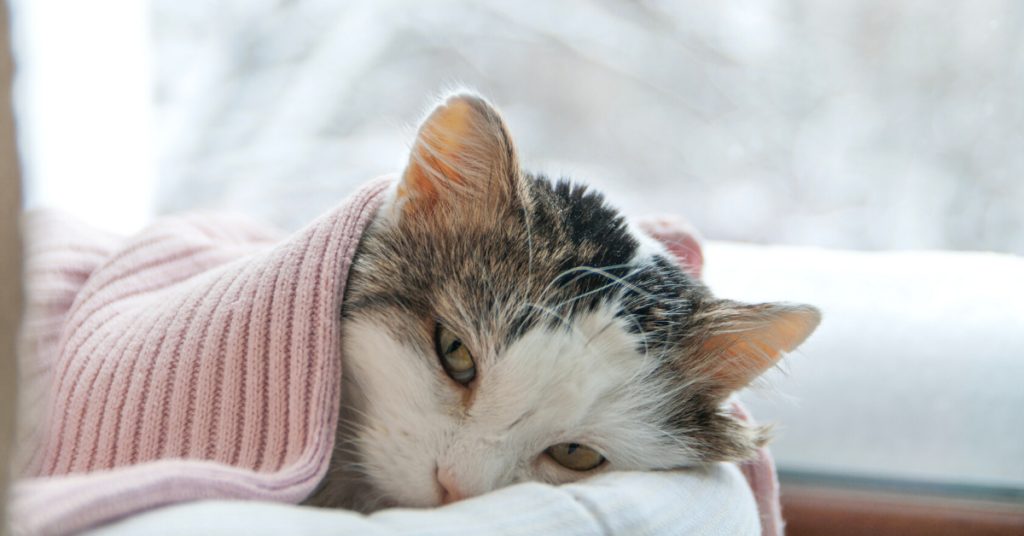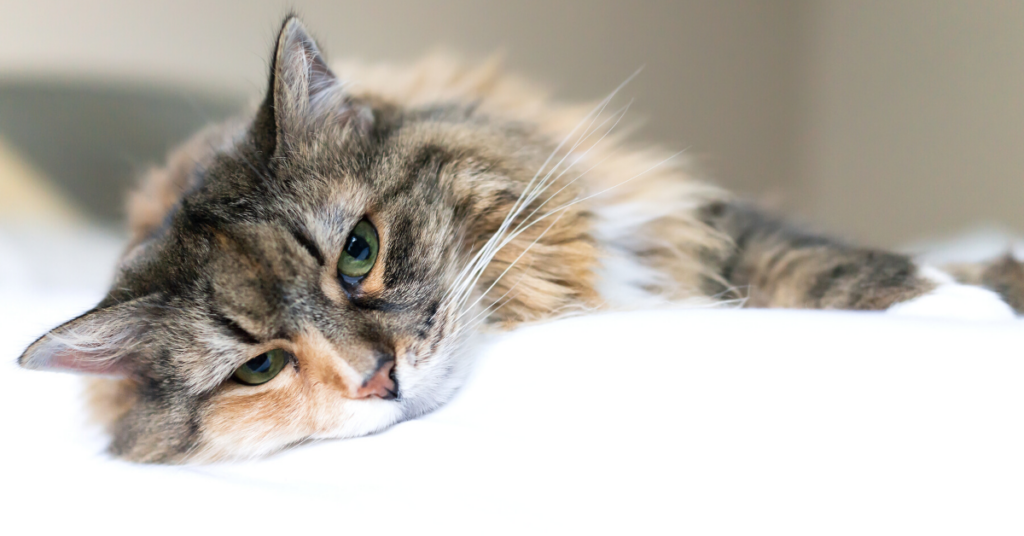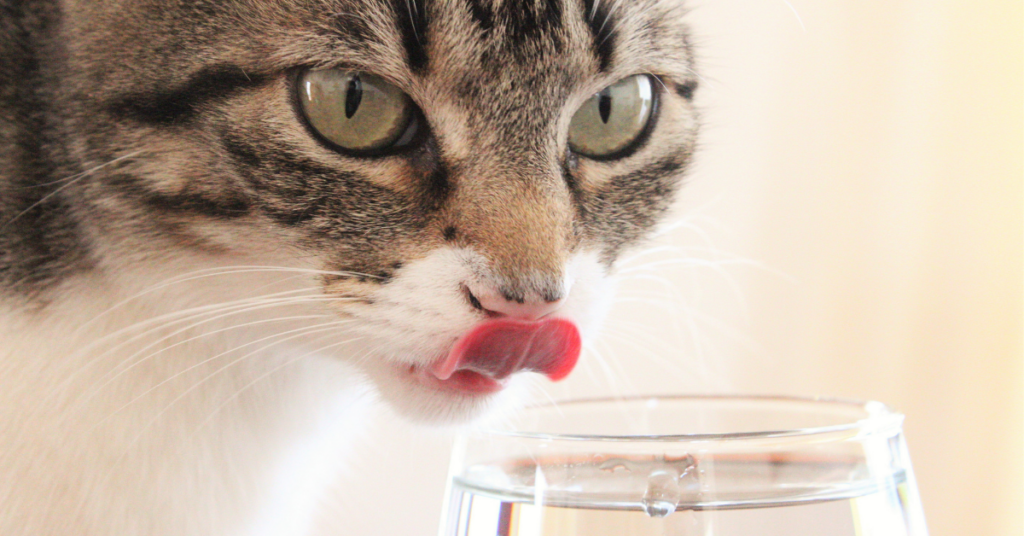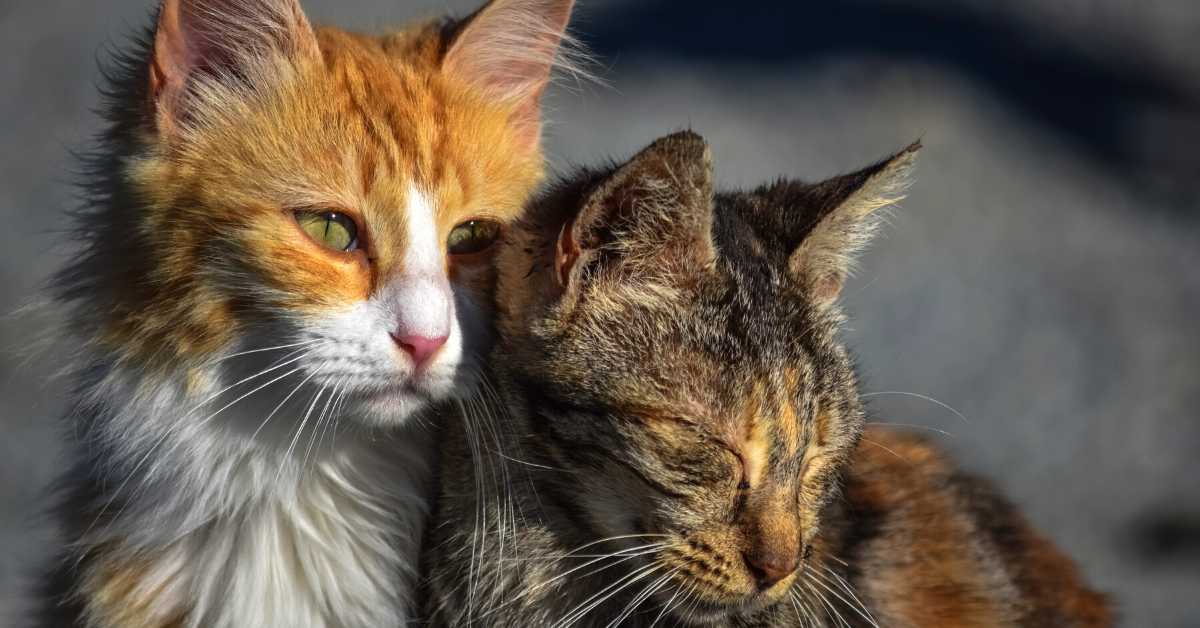Blood in Cat Urine: What Does It Mean?
If you’ve ever seen blood in cat urine, you know how frightening it is. While it’s not something anyone wants to see, blood in cat urine is rather normal.
Hematuria, the medical term for blood in the urine, can be caused by urinary system abnormalities or disease processes elsewhere in the body that impact the urinary tract or kidneys.
Blood in your cat’s pee is never natural, and it should always be checked out as soon as possible.
What Causes Blood in Cat Urine?

A disorder known as feline lower urinary tract illness is the most prevalent cause of blood in cats’ pee (FLUTD). Feline idiopathic cystitis (FIC) and feline urologic syndrome are two more names for this illness (FUS).
The specific reason that cats are afflicted by FLUTD is unknown. Stress and obesity may have a part in the disease’s manifestation.
Other possibilities include deficiencies in the bladder wall’s “glue,” viruses, and other biological factors. Previously, it was considered that the ash content of diet or the pH of the urine was to blame for the sickness.
Blood can be seen in cat pee due to bladder stones. Other symptoms, such as straining and meowing when urinating, may also be present.
In addition, bacterial infections may be the cause for cystitis, which is more common in cats over 10 years of age.
Many older cats will have both bladder stones and a bacterial infection.
Bladder cancer is another rare cancer. This condition can cause a range of symptoms in cats, including blood in the urine.
Finally, anatomical anomalies of the urinary system in very young cats can occasionally result in blood in the urine.
Other Signs of Blood in Cat Urine

Hematuria might be as noticeable as blood or blood clots in the urine, although it isn’t always so.
The majority of hematuria cases are identified at the microscopic level on what seems to be normal-colored urine, with only a little quantity of blood present.
Urine may become pink or red due to hematuria. Other signs you may see along with a change in the urine’s color include:
- Excessive drinking
- Frequent urination
- Strain to urinate
- Making noises while urinating
- Urinating outside the litter box
- Not able to urinate, which is considered a medical emergency
- Skin bruises
- Bleeding from unusual places such the nose, gums, eyes, ears, or rectum, as well as bloody vomit or feces
Diagnosis of Blood in Cat Urine

Your veterinarian will begin by obtaining your cat’s medical history and doing a physical exam.
The presence of signs associated with lower urinary tract irritation is used to make the first diagnosis for a cat with hematuria.
The most common diagnostic test used to establish the presence of urinary tract inflammation or infection is a comprehensive urinalysis with sediment exam.
Other blood in the pee diagnostic tests include laboratory analysis of a urine sample.
A urine culture test can help identify the specific bacteria that may be present if your veterinarian suspects a urinary tract infection.
In addition, Blood tests may be conducted to look for additional signs of urological disease, such as kidney disease or bleeding problems.
Finally, the vet may need to do radiographs (x-rays) and/or ultrasound examination of the bladder and urethra, to diagnose hematuria.
Treatment of Blood in Cat Urine

Treatment for blood in the urine varies based on the particular reason, as it does with many disorders.
For example, if the underlying cause was a bacterial infection of the lower urinary tract, your vet would treat it using antibiotics.
Other therapies for sterile or idiopathic cystitis may include dietary adjustments, anti-inflammatory medicines, environmental changes, promoting higher water consumption, and others.
If a cat’s urethra becomes blocked, immediate treatment is essential to clear the obstruction, which can be life threatening.
The urethra will be flushed or catheterized in most situations, and the cat will be given a short-acting general anesthesia.
Uroliths (bladder stones) must be removed if they are present. Depending on the kind of bladder stone, it may be possible to dissolve it with a particular diet or dietary supplement, or it may be necessary to remove it surgically.
Prevention of Blood in Cat Urine

Unfortunately, preventing disorders of the lower urinary system in cats is impossible. We know that felines with low water consumption and who are inactive or fat are more likely to develop FLUTD/FIC.
These factors may have a little impact on a cat’s urine frequency. Weight loss, increased activity, and increased water consumption may help to avoid cystitis and FLUTD.
The most effective strategy to increase total water consumption is to feed wet meals. Circulating water fountains might also be a good way to get cats to drink more water and raise their water consumption.
Keep your cat hydrated so that his pee is less concentrated and less likely to develop crystals, which are the building blocks of stones.
It may also be beneficial to have an enriching habitat with clean and accessible litter boxes.
Special therapeutic diets may help avoid recurrence if bladder stones or crystals are the cause of blood in the urine.
When to See a Veterinarian

If you notice blood in your cat’s pee, or shows any other signs as mentioned above, please take it to your veterinarian as soon as possible.
The sooner you get a diagnosis and treatment, the sooner your cat can get back to living a healthy, pain-free life.







